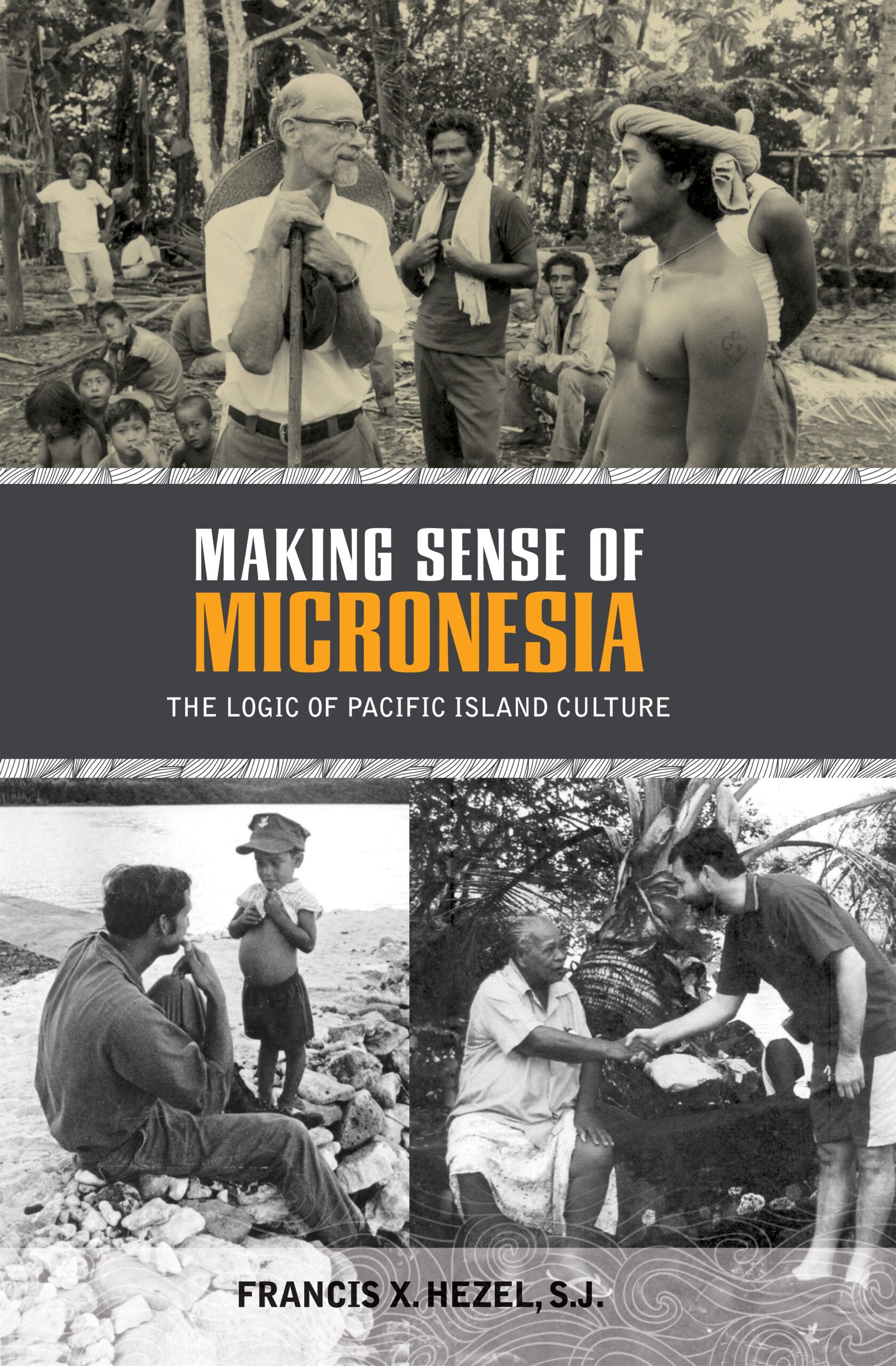Making Sense of Micronesia: The Logic of Pacific Island Culture
- About the Book
-
Why are islanders so lavishly generous with food and material possessions but so guarded with information? Why do these people, unfailingly polite for the most part, laugh openly when others embarrass themselves? What does a smile mean to an islander? What might a sudden lapse into silence signify? These questions are common in encounters with an unfamiliar Pacific Island culture. Making Sense of Micronesia is intended for westerners who find themselves in contact with Micronesians—as teachers, social workers, health-care providers, or simply as friends—and are puzzled by their island ways. It is for anyone struggling to make sense of cultural exchanges they don’t quite understand.
The author focuses on the guts of island culture: the importance of the social map, the tension between the individual and social identity, the ways in which wealth and knowledge are used, the huge importance of respect, emotional expression and its restraints, island ways of handling both conflict and intimacy, the real but indirect power of women. Far from a theoretical exposition, the book begins and ends with the real-life behavior of islanders. Each section of every chapter is introduced by a vignette that illustrates the theme discussed. The book attempts to explain island behavior, as curious as it may seem to outsiders at times, against the over-riding pattern of values and attitudes that have always guided island life.
Even as the author maps the cultural terrain of Micronesia, he identifies those areas where island logic and the demands of the modern world conflict: the “dilemmas of development.” In some cases, changes are being made; in others, the very features of island culture that were highly functional in the past may remain so even today. Overall, he advocates restraint—in our judgments on island practices, in our assumption that many of these are dysfunctional, and in leading the charge for “development” before understanding the broader context of the culture we are trying to convert.
- About the Author(s)
-
Francis X. Hezel, Author
Francis X. Hezel, S.J., is a Jesuit priest who has lived and worked in Micronesia for forty-five years. He founded and directed the Micronesian Seminar, a church-sponsored research institute that engaged in a broad public education program for the islands. He is the author of several books on the region’s history and culture, including The First Taint of Civilization, Strangers in Their Own Land, and The New Shape of Old Island Cultures. His articles and videos and other products of the Micronesian Seminar can be viewed on-line at the Micronesian Seminar website: www.micsem.org.
- Reviews and Endorsements
-
- The brevity and clear writing in this book make it a great deal more accessible to the non-specialist than nearly all ethnography or anthropological analysis. Yet it should not be thought that this clarity reflects any superficial understanding of Micronesian cultures. Fran Hezel knows the islands and its people intimately, and his goodness in sharing his knowledge so lucidly emphasizes how important he thinks it is that foreigners who go to Micronesia to “help” take the time to learn about the people they hope to serve.
—Pacific Affairs - Making Sense of Micronesia sensitively and vividly depicts the cultures of Micronesia for readers unfamiliar with the region and its inhabitants. Drawing on more than four decades of personal experiences as a Jesuit priest and based on insights gleaned from interviews, conversations, and research, Francis X Hezel engagingly presents his own process of slowly stumbling toward cultural knowledge. . . . Caught in a nearly timeless present, a deliberate blurring of the complexities of the numerous Island societies within this region enables Hezel to generalize about a singular Micronesian culture in comparative counterpoint to a Western worldview. This works. The many vignettes, written for broad appeal, resonate with anyone who has either spent time in Micronesia or has engaged with Micronesians abroad, and this invites the reader to relate first as a regional stranger coming armed with only an outsider’s limited and almost surely biased perspective. Then, introducing the local perspective, Hezel challenges the reader to question his or her own ethnocentric assumptions. With so many recent examples of ethnic tension, discrimination, conflict, and violence emerging between diasporic Micronesians and locals in Hawai‘i and elsewhere, it is increasingly important for teachers, social workers, health-care providers, and the general public to learn about Micronesian beliefs, customs, and ethics from within Micronesians’ own culture. Hezel has provided such a reference, written in clear prose, free of academic jargon.
—The Contemporary Pacific
- The brevity and clear writing in this book make it a great deal more accessible to the non-specialist than nearly all ethnography or anthropological analysis. Yet it should not be thought that this clarity reflects any superficial understanding of Micronesian cultures. Fran Hezel knows the islands and its people intimately, and his goodness in sharing his knowledge so lucidly emphasizes how important he thinks it is that foreigners who go to Micronesia to “help” take the time to learn about the people they hope to serve.
- Supporting Resources
-





